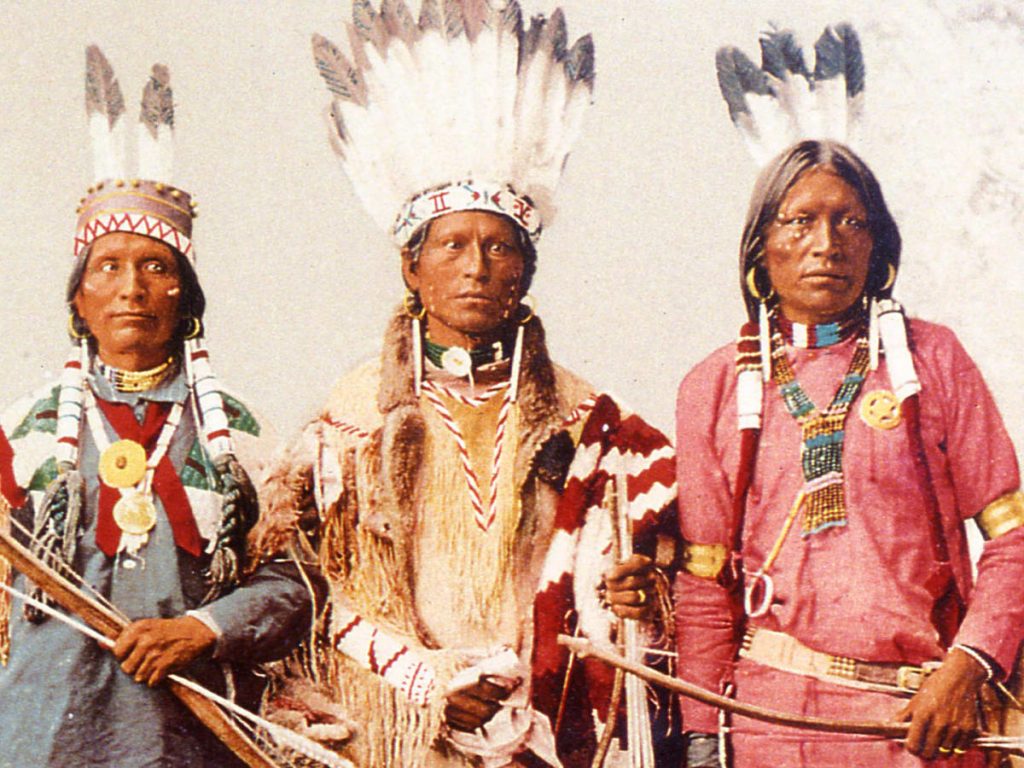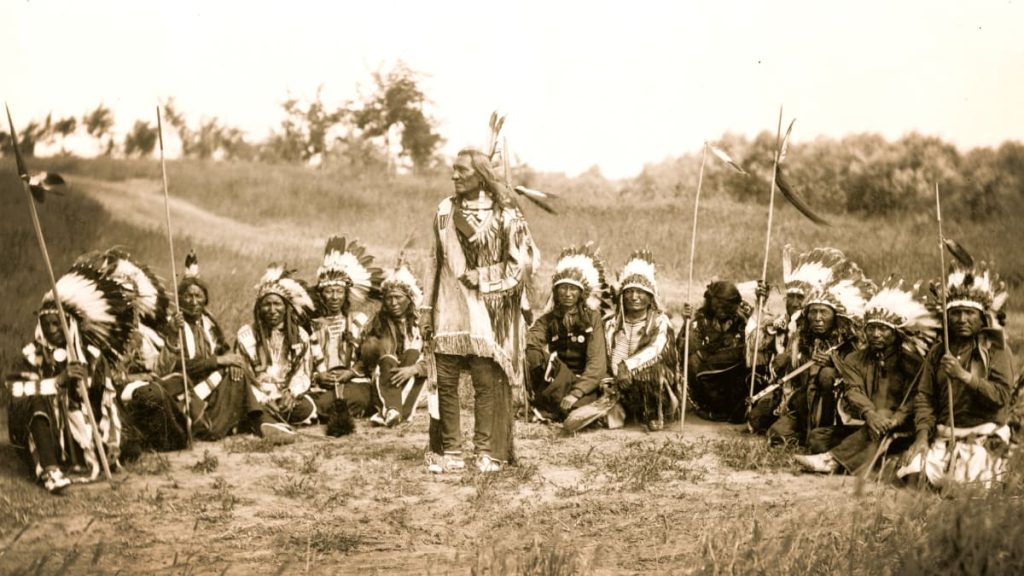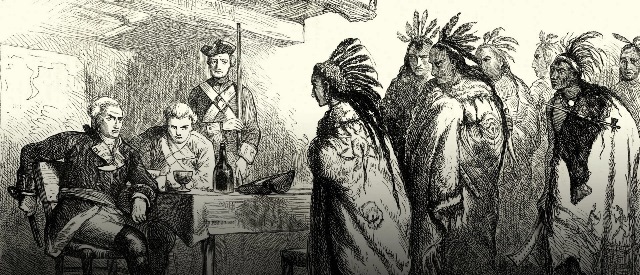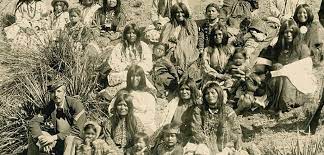Thousands of years before there was anything like the United States, the territory was home to Native Americans. And their history began when the Paleo-Indians settled in the Americas. The Native Americans worked hard for their settlement. They resided there before the European explorers arrived in the 15th century. But sadly, as the years passed, the European invaders forcefully took their territories and weakened their cultural identity. And as more explorers tried to occupy their territory in the 16th and 17th centuries, Native Americans reacted in various ways, ranging from cooperation to outrage to revolution. How were they overpowered? Here’s the story of how the United States erased Native Americans.

The History of Native Americans
Paleo-Indians (native Americans) were native people who moved from Eurasia before the Americas were even established. Interestingly, Archaeologists have calculated that this movement took place roughly 10,000 years ago. This is based on the bones discovered and other research experiments. The Paleo-Indians inhabited the area, increased in population, and divided into various tribes with different customs and languages.
Through several millennia of evolution, the native Americans gave rise to many eras. These were characterized by certain occupations, such as farming, hunting, and aquatic life. The tribes are also remembered for producing indigenous artifacts and constructing wonderful historical places that continue to attract travelers and tourists today.
Plymouth served as the base of operations for the first group of European settlers to arrive in America. These were people similar to the colonists from Jamestown and the Pilgrims. However, upon their realization that the lands weren’t ’empty’ as expected, they planned several methods for displacing the occupants. Their techniques included both civil and aggressive techniques, such as cession agreements, signing land treaties, and outright war.
In exchange for the areas they now inhabited, the white settlers promised the native Indians money and smaller plots of conservative lands where they would freely engage in their community activities like fishing, hunting, and so forth. These agreements, however, weren’t always adhered to. And that led to disputes and violent evictions.
Read: How Argentina Erased the Black Community From Its History

Native American (Indian) Removal Act
President Andrew Jackson passed the Indian Removal Act in 1830. The aim was to move the Indians from their traditional lands to a particular area. “Manifest Destiny” was the theory used to support the settlers’ quest for larger territory, which further supported their action.
According to claims, Manifest Destiny was supposed to be a push for civilization. But the Indians stood in the way of achieving this. The settlers thought their best chance at getting the natives to leave was to evacuate them. This was when the Trail of Tears started. Thousands of Indians, including Seminoles, Choctaws, Cherokees, Chickasaws, and Creek, were forced to move to the western regions of Oklahoma between 1830 and 1850.
Native American Wars and Conflicts
The Native Americans couldn’t match the White immigrants’ power in terms of conflicts, fights, and wars. For the harsh victories that took place in the struggle for lands, the immigrants were more organized and more prepared. Although some Indian tribes, like the Nez Perce, ceded their territory quietly, other Indian groups mounted many fronts of resistance that led to battles.
Among the numerous conflicts, the one fought on June 25, 1876, at The Little Bighorn stood out. The Sioux Indian tribe and the immigrants went to war. Sitting Bull, the chief of the native tribe had begged nearby tribes to support him in the battle without the knowledge of the US troops. Due to being outnumbered, the US troops ultimately suffered a crushing loss in which over 250 men lost their lives. However, Sioux’s triumph was short-lived because the government quickly cracked down on them. This resulted in arrests, fatalities, and their complete expulsion from their territories.
Innovative Tech Solutions, Tailored for You
Our leading tech firm crafts custom software, web & mobile apps, designed with your unique needs in mind. Elevate your business with cutting-edge solutions no one else can offer.
Start NowAnother of the many conflicts between the Americans and the natives that are well remembered is the Battle of The Wounded Knee. It is also known as the Wounded Knee Massacre, which occurred on December 29, 1890. It was essentially a rematch between the Sioux and American Army forces. The Sioux tribe decided it was time to surrender after learning that their previous chief commander, who had guided them to triumph, had been captured and killed. The battle of The Wounded Knee was the final known conflict between the Native Americans and America before a new strategy was adopted.
Read: Facts About Ancient Egyptians That European Colonialism Has Misconstrued

Introducing Education and Religion to the Native Americans
The white invaders had developed a superior and more successful strategy for fighting the Indians.
Americanization.
It was how the United States erased Native Americans and stripped them of their cultural identity.
Education and religion were their two main weapons. Through religion and education, the United States attempted to subtly integrate its Native Americans into society while erasing their cultural heritage and identity. With the promise of an improved life and future, the children of the indigenous people were lured into white boarding schools and compelled to embrace European habits and institutions. In their words, they were meant to benefit from greater integration into the new American society if they complied.
Native American children began to be accepted into boarding schools in the 1880s. This was primarily in the Carlisle Indian School and the Hampton Institute. In these schools, children were made to give up all items of dress and material culture that represented their lineage. They were also stripped of their hair and prevented from singing or speaking in their native tongue. These were replaced with American ideologies, lifestyles, clothing codes, and social norms. Additionally, they received industrial training so they could work in manual labor. This was done so they could contribute to the industrialization of the United States of America.
More Crimes Than the History Books Tell Us
It took over a century before the depth of the crimes in these schools was examined. There have been new reports of sexual, physical, and mental assault. Also, numerous unmarked graves thought to be those of Native American children were found in February 2022 in Canadian schools that had been modeled after Native American boarding schools. This has led many to wonder what happened within these schools’ walls back then. And whether Native American nations’ children experienced the same fate.

The Indoctrination of Native Americans (Americanization Fulfilled)
The process of indoctrination did not exclude Native American adults. In their own case, religion was one of the main tools employed against them. Many religious groups, including the Evangelicals, Protestants, and Catholics, attempted to convert the grown-up Native Americans. They influenced them to give up their traditions, customs, and clothing in favor of European-American practices.
Giving the Indians land in exchange for denouncing their culture, identity, rituals, and essentially everything else that represented their native history was the deciding factor in this cruel but successful policy. The idea that land might be owned by one person at the expense of another was contradictory with their communal way of life.
The General Allotment Act (Dawes Severalty Act) was enacted by President Grover Cleveland on February 8, 1887. This law provided the government the authority to seize land belonging to various tribes and redistribute it, with larger shares going to family heads. Although they had been awarded full citizenship rights, the Indians could not claim complete possession of these territories until 25 years had passed. The immigrants, as was their pattern when dealing with the Indians, made sure to divide up the territories that were the least fertile and claimed other portions as “surplus” while doing so.
The “final arrow pageant” was held to firmly establish their denunciation. Indians would have to gather for this event, dressed out in full tribal costume and armed with a bow and arrow. Then they would release this symbolic arrow into the air, known as their “final arrow,” before going into a tent to change into white work overalls and emerging with the American flag. This was done to demonstrate the complete renunciation of their previous way of life in favor of the acclaimed better one.
Mission Successful: The United States Erased Native Americans Their Lands and History
These historical events surrounding how the United States erased Native Americans from history aren’t properly documented. They have either been removed from the academic curricula in many American states or watered down. The white invaders are now depicted as having good intentions. Or doing the right thing.
Native Americans’ commitment to maintaining their own cultural identity has been heightened by previous attempts to eradicate it. This led to the establishment of schools and colleges devoted to preserving the Native Americans’ cultures. Even still, many Native Americans may never fully recover from the loss they experienced because of the profound scars left by earlier generations.
Before you go…
Hey, thank you for reading this blog to the end. I hope it was helpful. Let me tell you a little bit about Nicholas Idoko Technologies. We help businesses and companies build an online presence by developing web, mobile, desktop, and blockchain applications.
As a company, we work with your budget in developing your ideas and projects beautifully and elegantly as well as participate in the growth of your business. We do a lot of freelance work in various sectors such as blockchain, booking, e-commerce, education, online games, voting, and payments. Our ability to provide the needed resources to help clients develop their software packages for their targeted audience on schedule is unmatched.
Be sure to contact us if you need our services! We are readily available.











